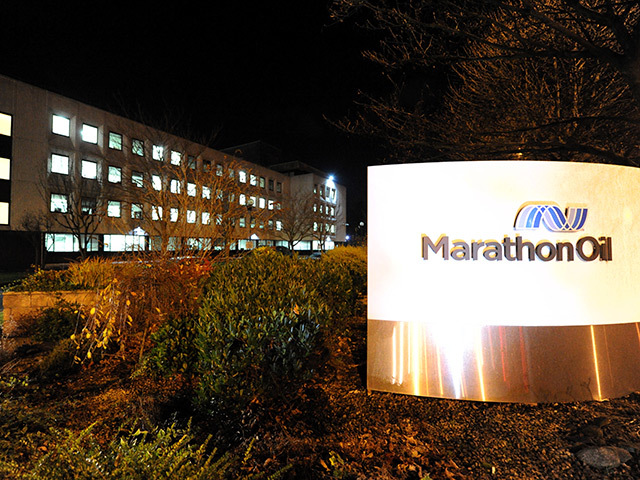
Investors who urged U.S. integrated oil companies to spin off their weaker refining arms got it right in an unexpected way.
The argument went, without refining dragging it down, the exploration and production side would flourish. Instead, the crude plunge made refiners into the big winners of 2015, supporting money-losing crude operations.
Investors who owned stock in Marathon Oil Corp. and ConocoPhillips when the giants split into separate upstream and downstream companies in 2011 and 2012, respectively, have done far better since the breakups than those who owned Exxon Mobil Corp. and Chevron Corp., the integrated companies that chose to stay together.
“If there’s upstream and downstream parts of your company, it’s probably best to let them go on their own,” said Carl Larry, head of oil and gas for Frost & Sullivan LP. “If you want to grow, you need to focus on one thing and one thing only and do it right.”
Marathon officially broke up July 1, 2011, spinning off its refining and transportation assets into Marathon Petroleum Corp. and giving investors one share of that company for every two of the parent they held.
Marathon Oil’s value plummeted in the past year as the price of the crude it extracts from the ground crashed by more than 50 percent amid a global supply glut. The company’s total return including dividends since the split is an annualized loss of 9.9 percent through Nov. 6.
Refining Gains
The refining unit has blossomed as it turned that cheap crude into gasoline, which all of a sudden was in high demand with prices at a nine-year low. Marathon Petroleum has produced a 28 percent annualized total return, including reinvested dividends. Together, through Nov. 6, their return was 16 percent compared with 3.6 percent for Exxon Mobil and 1.4 percent for Chevron for the same period.
“We believe our performance since becoming an independent company confirms our conviction that the spinoff was the right transaction at the right time,” Jamal Kheiry, a spokesman for Findlay, Ohio-based Marathon Petrolem, said by e-mail.
If an investor owned 100 shares of Marathon before the split, they would be up about $2,909, according to data compiled by Bloomberg. Owning the same number of Exxon shares would have netted a $1,368 gain and $631 for Chevron.
Chevron defended its decision to remain an integrated energy company.
“The strong operational and financial performance of Chevron Downstream and Chemicals over the past year clearly demonstrates the value of a diversified portfolio in an integrated energy company,” Braden Redall, a spokesman for the San Ramon, California-based company, said by e-mail.
Marathon Oil declined to comment. ConocoPhillips, Phillips 66 and Exxon Mobil didn’t respond to requests for comment.
It’s a similar story for ConocoPhillips. The upstream unit’s annualized total return is 5.4 percent since the May 1, 2012 split, while Phillips 66, the downstream company, has returned 36 percent a year. The return on 100 shares since the split is $4,420, compared to $701 for Exxon and $4 for Chevron. The combined annualized return was 18 percent compared with 2.2 percent for Exxon and little changed for Chevron.
“That’s why you split off,” said David Pursell, a managing director at investment bank Tudor Pickering Holt & Co. in Houston. “Companies are able to focus on what they’re good at and investors have better visibility about what they want to own.”